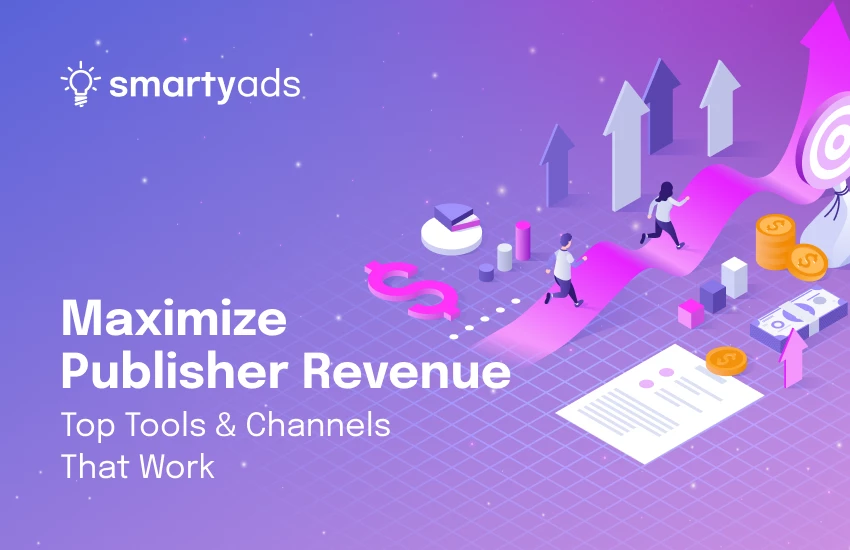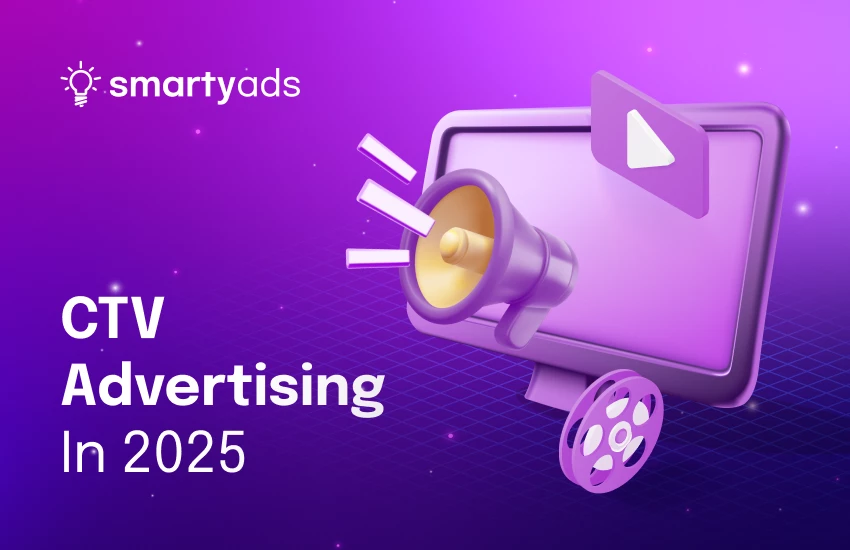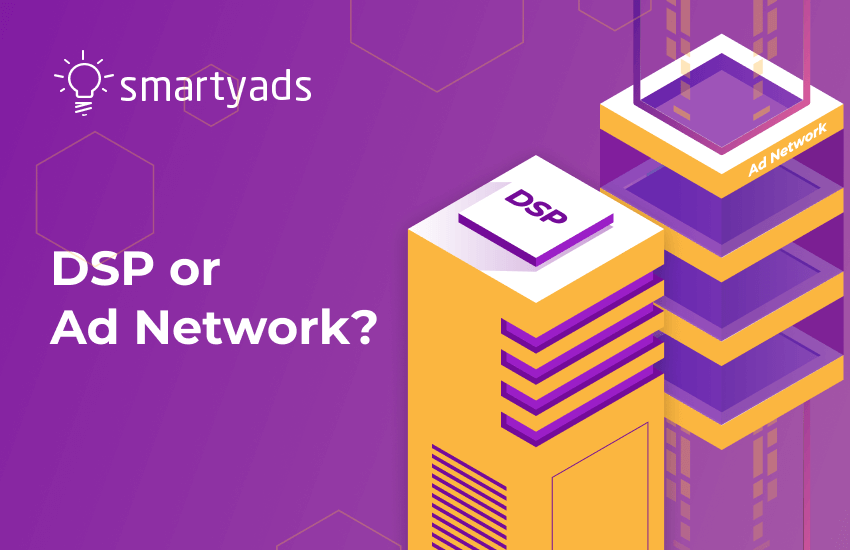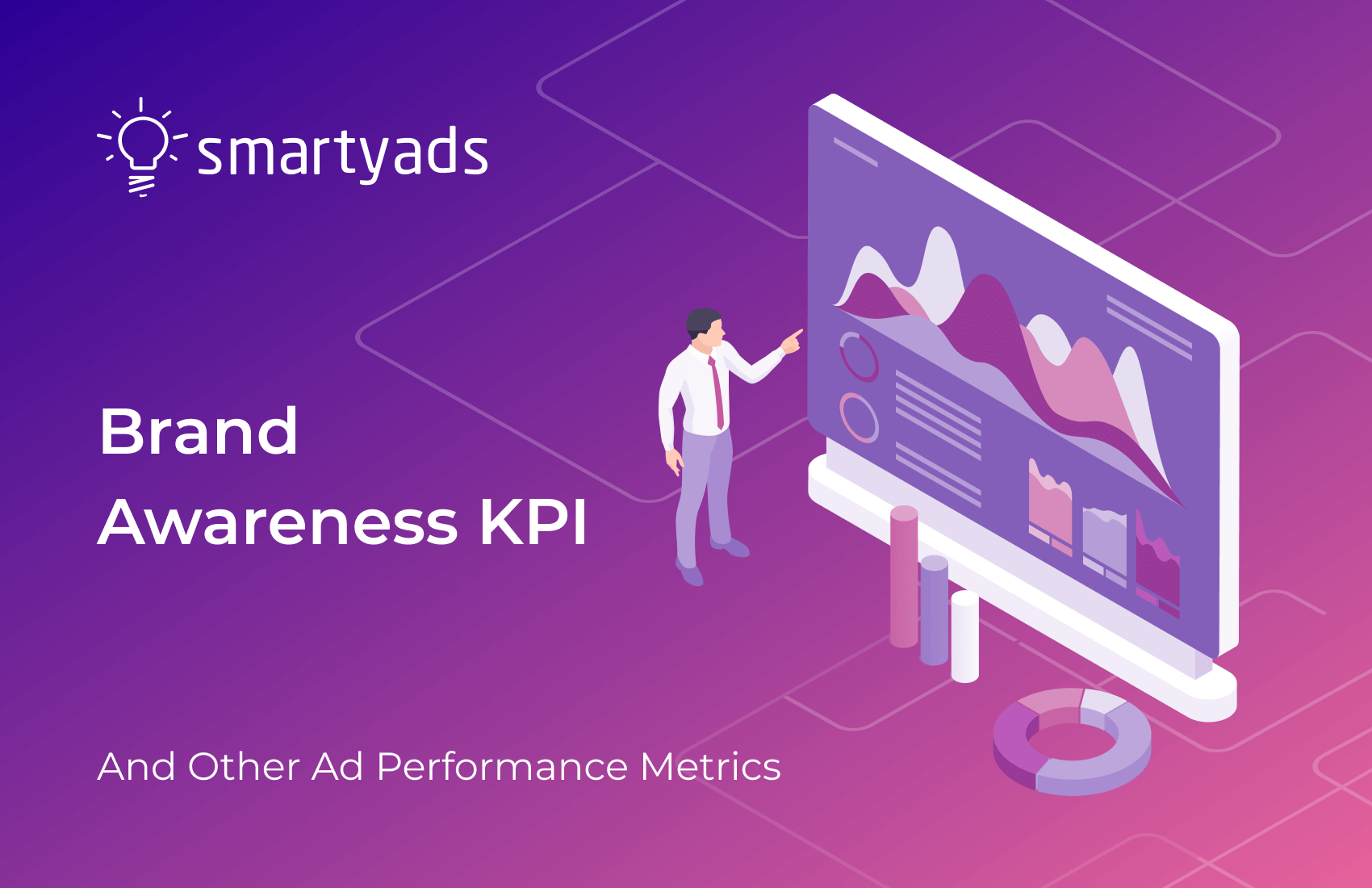If you’re a publisher, you probably already know that having a strong media selling strategy is the backbone of earning more through monetization. And if you’re a newcomer just entering the world of media sales, it can feel like a real challenge, especially because advertisers are looking for more than just ad inventory. They’re investing in the value of the views behind that inventory.
Today, we will discover actionable steps that can help publishers determine how to fine-tune their inventory selling strategy so that it delivers the best possible outcomes.
Tips, platforms, tools, and settings? Let’s review many of those helpful things to boost your media sales.
Understanding today’s media channels: The building blocks of media sales
Think of your ad inventory as a storefront. When you put your offer to everyone’s view (inventory), there’s a higher chance that it will attract the right kind of buyers. The best way to maximize this chance is to make your ad placement available at the maximum number of venues or digital channels. There are plenty of such channels you can tap into.
Direct sales: A personalized approach
Direct sales are like building a personal relationship with an advertiser. This method gives you more control over your pricing and selling conditions. You work directly with advertisers, setting the terms and negotiating rates. It’s a more hands-on approach, but it can often lead to premium deals and higher CPMs (Cost Per Thousand Impressions) since you control the process from start to finish.
Example: Imagine you run a popular health and fitness blog. A nutrition brand wants to target your audience with a banner ad campaign. Since you’ve built a relationship with them, you can set a fixed CPM and offer them exclusive access to your readers. This guarantees that both parties benefit from the deal.
Programmatic sales: The automated helper
Programmatic advertising is also the best friend of a publisher in 2025 and beyond. Why? Because by 2028, roughly 80% of all digital advertising revenues will come from programmatic.
In simple words, programmatic media-selling is like having your own automated team of agents who constantly sell your ad spaces to buyers who need them most.
Without digging too deep into the specifics of this automated media-selling method, it’s fair to say the following: you register with a programmatic SSP, make your inventory available, and the rest (selling impressions) is handled by the platform itself through real-time bidding auctions.
No need to worry – these systems are really smart today, so you don’t have to be afraid of selling ad space at too low a price. The system will automatically select advertisers based on the criteria you set on the SSP – minimum price per impression, the ability to exclude or prioritize certain types of placements and advertisers, and more.
Automated buying is also one of the most universal ways to make your inventory available across numerous channels, which is why relying solely on direct deals would be a strategic mistake, especially for small publishers who don’t have much premium inventory to offer.
By the way, you can use direct deals on programmatic platforms as well, which is enabled by deal IDs (read more about programmatic direct in our previous articles).
Example: Let’s say you’ve got extra ad inventory that wasn’t sold through direct deals. Instead of letting it go unused, you list it on your SSP. Advertisers then bid on it in real time, and you get the highest possible price for your inventory.
Header bidding: Increasing competition for better rates
Before header bidding was introduced into the programmatic model, sellers had to offer their inventory to buyers one by one using the waterfall model. This meant that if your ad placement was bought by the first buyer in the queue, you’d never know whether the second or third buyer might have offered a higher price, right? We also have header bidding explained in our prevois article.
When this technology popped onto the scene, everything changed — it introduced a unified auction where all buyers could access inventory and bid simultaneously. In this type of auction, inventory becomes available to multiple platforms at once, which naturally increases competition. And the higher the competition, the higher your potential revenue.
Example: You can opt for server-side or client-side header bidding auctions with some SSPs. This way, you will make your ad placement available to a wider range of media buyers who will be interested in your inventory. This means you will have better revenue potential.
Video, CTV, mobile, in-app, DOOH: Diversifying your inventory
If you plan to monetize, let’s say, your website and app, you will need to allow different kinds of ad formats and devices. Publishers who have inventory for serving Connected TV ads, DOOH advertising, in-app, and mobile are the ones who can make the most out of monetization because those channels are growing rapidly.
Example: If you are a publisher with a website or app, there is a strategy to reinforce this approach. For example, you can choose display ads to monetize your website, while also opting for interactive and dynamic formats to monetize your application. You may also explore the most profitable web and mobile ad formats to pinpoint the most effective revenue-generating ad units that you can serve on your inventory. Additionally, having different types of inventory and being open to serving various kinds of ads means you can attract a wider range of advertisers and media buyers.
Media selling strategies for publishers: Revenue optimization techniques
Now, it’s time to think through a precise strategy of how to make the most of what you have.
Yield management: Maximizing results
Think of yield management like adjusting the prices for something you’d sell in real life. Are your ad placements selling out as quickly as hot dogs? Wow, that might mean you can raise the price a bit to see if it still works. To figure that out, you’ll need strong performance analytics on your SSP to understand how your inventory is performing.
Floor pricing: Protecting your revenue
Floor pricing is your safety net. It ensures you avoid potentially disadvantageous deals as a seller. In other words, it prevents you from selling your space for a price that is too low. The floor pricing function allows you to set the minimum price you're willing to accept for ad serving. This way, the feature helps protect your ad yields.
Pricing strategy: Determining the right price per impression
This is where art meets science. Knowing what your ad inventory is worth—and how to price it effectively—is key to maximizing earnings without scaring away buyers.
Step 1: Know your audience and performance metrics
Start by understanding the value of your audience: what niches they fall into, their location, engagement level, and device usage. High-value audiences attract higher bids.
Step 2: Use historical data to set baselines
Ask your SSP vendor about average CPMs and fill rates in your niche. Use this data to set smart floor prices and benchmark your value.
Step 3: Apply pricing in RTB auctions
With platforms like SmartyAds SSP, you can set the floor price individually. For instance, you can choose the floor price that is best for a particular country, or you can set up an optimal range that will automatically keep your floor price at the best level, thanks to AI optimization algorithms.
4. Real-Time optimization: adapting as you go
In the digital world, things move fast. Real-time optimization allows you to adjust your strategies based on your ads' performance. By analyzing real-time data, you can optimize your placement performance and, thus, yield. At SmartyAds SSP, you can select what metrics to choose and track in order to stay aware of your performance and later apply timely optimizations.
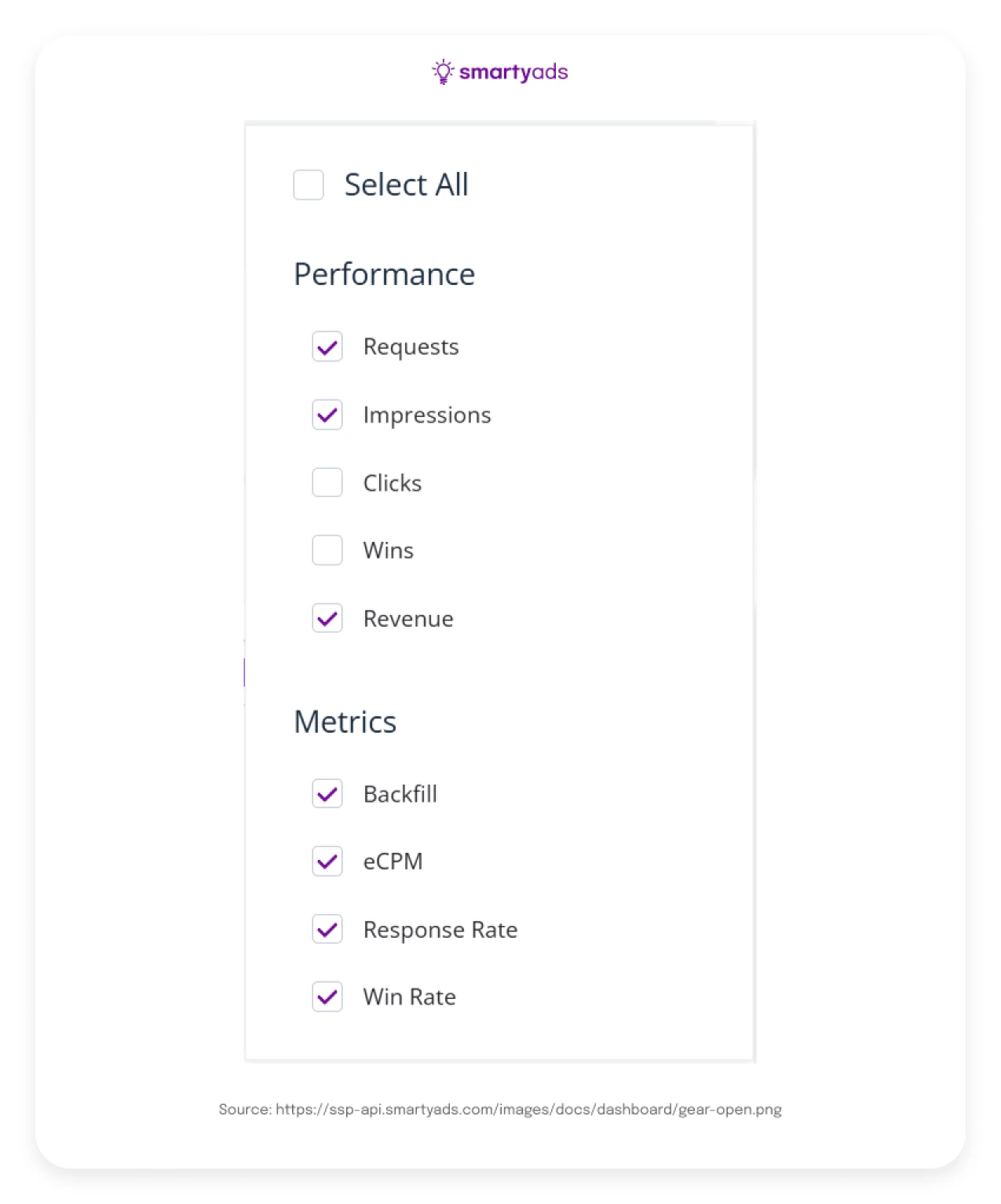
Also, you can stay updated via the inventory section of your platform – see which placements receive the most views and get the most requests from advertisers. All this is available in the “Inventory” section.
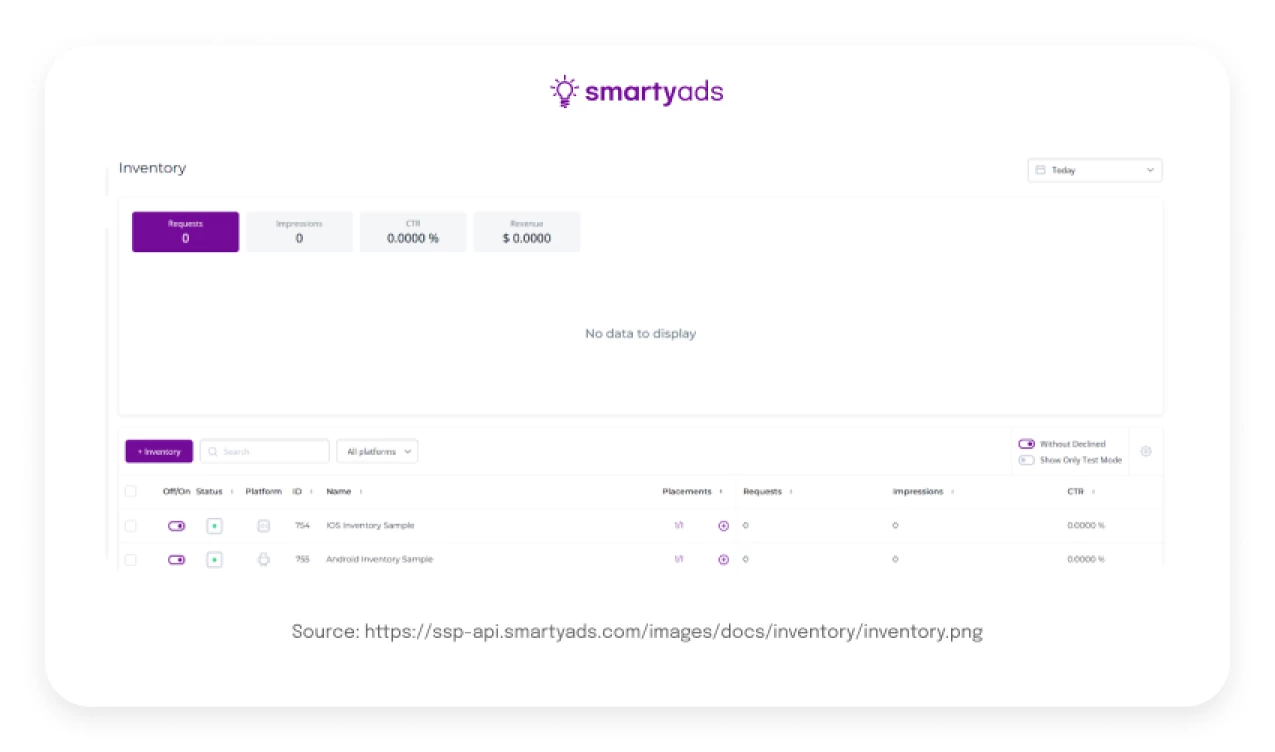
You'll see placement performance metrics, including the number of requests, impressions, click-through rate, and total revenue. These will be formed based on the period that you select in the upper right corner. Aside from viewing stats, you can manage the inventory here: disable certain placements or add new ones.
Choosing the right monetization mix: The perfect blend
How do you choose the right mix of monetization methods? Think of it like cooking a dish—you need the right ingredients in the right proportions.
Direct Deals offer stability and premium pricing. They give you control over your inventory and allow for exclusive, long-term contracts with advertisers.
Programmatic RTB deals, on the other hand, provide scalability and automation. They fill in the gaps left by direct deals, ensuring your inventory is always monetized.
Example: You have high-paying direct deals with top brands and use programmatic to monetize the remaining inventory. This balance lets you maximize your fill rate and CPMs across the board.
Where supply-side platforms (SSPs) fit in: Automating and maximizing your sales
A Supply-Side Platform (SSP) is a technology that helps publishers effectively fill ad placements in real-time thanks to smart algorithms. The essence of it is that it connects to different sources of demand, enabling the seller to reach global buyers.
With your chosen SSP (for example, like SmartyAds), you can access real-time bidding (RTB), header bidding, direct deals, and private marketplace (PMP) deals via a single dashboard. It also enables publishers to fine-tune their inventory for the right kind of buyers, ensuring that they are getting the highest possible price for their inventory.
Smartyads SSP: Your partner in maximizing media monetization
SmartyAds SSP is built to help you optimize revenue through a combination of real-time bidding, direct deals, PMP deals, and header bidding. Here’s how it works:
Real-Time Bidding & Direct Deals: Sell your inventory at the highest price with real-time auctions or lock-in premium deals (create a new deal section).
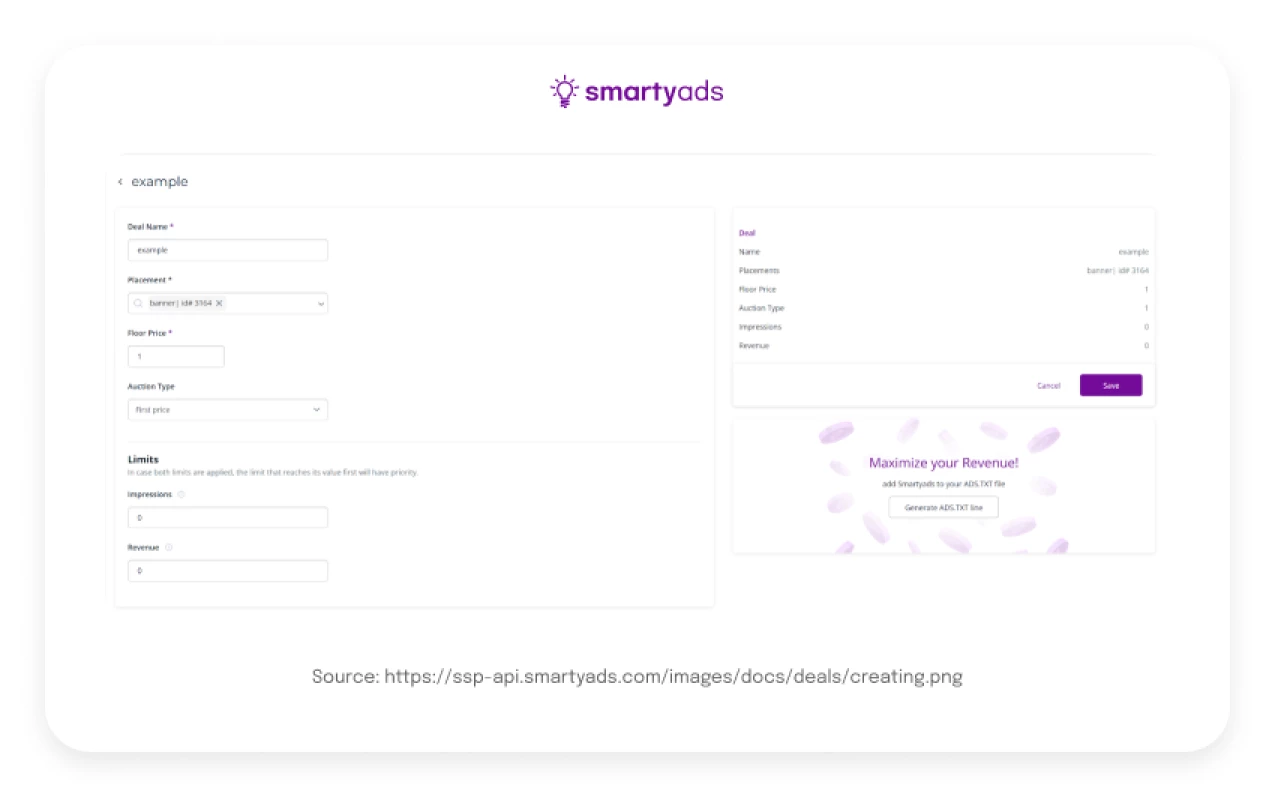
- Header Bidding & In-App Header Bidding: Increase competition and boost CPMs across devices.
- Yield Protection & Floor Pricing: Set floors to maintain pricing integrity.
Google MCM Access: Gain more demand through Google’s Multiple Customer Management. If you have placements and use Google Ad Manager, you can monetize your traffic from there through our SSP.
By using SmartyAds SSP, you automate and scale your sales efforts, maximize your revenue across channels, and retain full control of your pricing strategy and buyer relationships.
Final thoughts: The road ahead for publishers
Crafting a successful media sales strategy involves finding the right automated tools and developing your own path for growing ad yields. Modern programmatic tools allow publishers to avoid the routines of finding the right match for their placements, as media selling can be done in real time. What’s even more important is that those platforms already include efficient inventory optimization tools that boost monetization results, like header bidding, PMP, direct, and RTB deals.
Whether you are a small publisher or an enterprise looking to scale media sales, an SSP will help you take control of your monetization strategy while boosting your revenue potential.
Ready to tap into omnichannel programmatic monetization opportunities? Create your free account on SmartyAds SSP!
